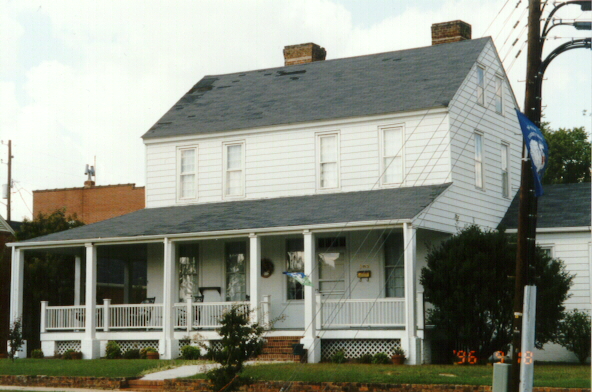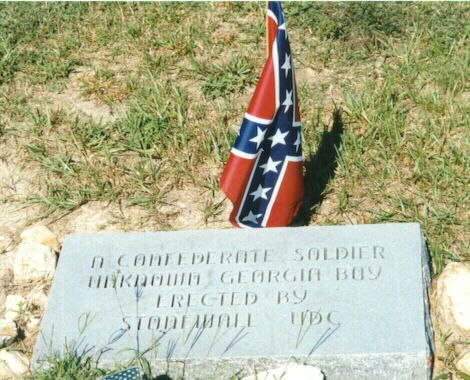| Chesterfield
Around 1760, Hugh Craig of County Down, Ireland, moved his family to
Virginia, where they were instrumental in the organization of Chesterfield
Co., Virginia. Hugh had three sons, John, James, and Alexander. During
the American Revolution, John served as a patriot in South Carolina. Liking
what he had seen, he and his brother Alexander relocated from Virginia
to the area that is now Chesterfield. Between January 21, 1785 and May
16, 1799, Alexander received 7 land grants in Cheraw District totaling
2655 acres.
John Craig House, circa 1798

John on February 22, 1797, married Sarah Chapman, daughter of James
Chapman of Virginia and built her a house, still known as the Craig house,
it is the oldest house in Chesterfield. Soon Sarah's brother, John, with
his wife moved into the area, and these comprised the first two families
in the town.
The South Carolina County Court Act of 1785, divided what had been Cheraw
District, into three separate counties, Darlington, Marlboro, and Chesterfield.
The Craig homeplace was chosen to be where the new county built its courthouse.
The county, by tradition, was named after Chesterfield Co., Virginia, through
the influence of the Craig family. However most materials state, the county
was named after Lord Chesterfield, Philip Dormer Stanhope, a close friend
of George III, for which Chesterfield Co., Virginia was named.
In 1819, Report 1, of the Civil and Military Engineer, the following
was recommended: "The roof of the Court House of this district will
require to be new shingled and painted. The outside Walls and the Window
Shutters and the Doors to be painted. The Roof of the Gaol to be repaired
and painted; all the outside Shutters, outer Doors, Window Sashes and Frames
to receive one coat of paint. I would respectfully recommend that an appropriation
of six hundred dollars be made for these objects." As a result in
the Report of the Commissioner For the Department of Public Buildings,
to the Board of Public Works, for the year 1820, it is stated "A proposal
has been made for executing the repairs required to the court house and
gaol in this district and the workman has been ordered to proceed with
the work. The court house is a wooden building, two stories high, and measures
34 by 24 feet, This building has been standing some time, but it is in
tolerable repair, has been well kept, and is considered sufficiently large
for the business of the district. The gaol is a substantial brick building
, two stories high, and measures 40 by 36 feet---there are four rooms on
the first floor, and five on the second, which are well arranged."
John Chapman was paid September 4, 1820 for the repairs completed by him
on the Court House and Gaol. It appears as though the Craig family, who
where very involved in county politics, took pride in their little town
and the buildings within.
Chesterfield became largely an industrial town. By 1845, located in
town were an iron foundry, fur hat factory, blacksmith shop, cabinet and
furniture shop, harness and shoe shop, wheelwright shop, a flour, grist
and saw mill. At this time the population was 50 whites and 250 blacks.
On November 19, 1860, Chesterfield County held the first Secession meeting
held in South Carolina. Local leaders at that meeting were Col. Stephen
Jackson, Senator James White Whitney, Col. McFarland, Col. Prince, Col.
H. McIver, Chancellor Inglish, General E.B.C. Cash, and Col. Alfred Lowery,
an ex-senator. The ensuing War took a terrible toll on the inhabitants
of the County.
The town was the site where many of the men and boys of Chesterfield
Co., signed up in Confederate States Army "for the duration of the
war". Many would not return.
A Confederate Soldier From GA

On March 2, 1865, the 123rd New York Inf, 20th
Division, entered Chesterfield skirmishing with Butler's Confederate Cavalry.
A stand was made on the east side of Thompson's Creek, after the bridge
had been burned, which held the Union Troops in Chesterfield till the next
day. Sherman spent the night there also sleeping in the Craig house. Chesterfield
was recorded as a '"dirty little town" at about twenty houses,
one hotel, and a court house.' ( Sherman's March Through The Carolinas,
John G. Barrett, page 106) About a mile on the east side of the Thompson
Creek bridge is a lone grave which marker reads "A Confederate Soldier
Unknown Georgia Boy, Erected by Stonewall UDC", apparently a casualty
of the skirmish the day before. Before leaving the town, the Court House
was burned with all the records except one Deed Book that partially survived.
In 1872, Chesterfield was incorporated. Until 1900, Chesterfield was
connected to Cheraw and the other communities by post road, but then the
Cheraw-Lancaster Railroad arrived, bringing greater trade with other areas
of the State. The railroad was removed in 1941, being replaced by trucking.
Chesterfield has continued to grow, and has prospered. Highway #9, bypasses
just to the south of Main Street, a wide street lined on both sides with
the town businesses and shops. The current mayor, John Douglas says "There
are a lot of things that make Chesterfield special that you don't find
in other towns our size, (1990 population 1,373), an active downtown, four
park areas, and a very active urban forestry program, and a community center.
Chesterfield shows how a town can have growth but maintain its small town
atmosphere." Still the main industry in Chesterfield is government,
for the town and for the County.
|